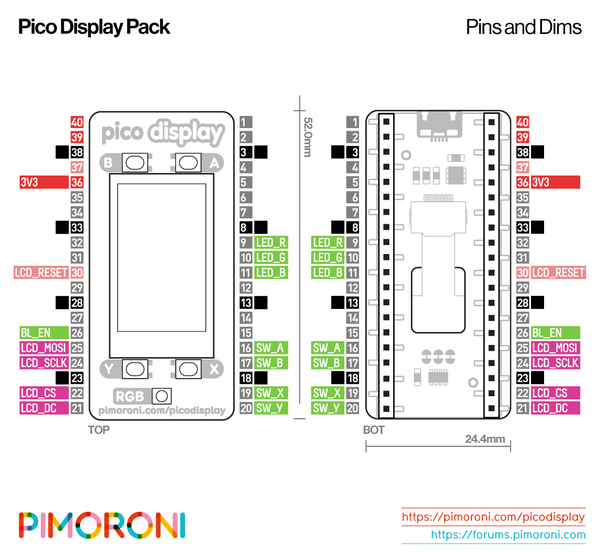
So, these pins are not available on the W edition.


The Raspberry Pi Pico W includes a wireless interface, wired internally to pins 23, 24, 25, and 29. Related questions Is there a difference between the Raspberry Pi Pico and Pico W?
My book: Master your Raspberry Pi in 30 days. 15 best operating systems for Raspberry Pi (with pictures). 25 awesome Raspberry Pi project ideas at home. If you are an advanced user, know that the Raspberry Pi can also be used via SPI and I2C protocols, so most pins have other ways to be addressed in your code. Just remember that not all ports are equal, and you can’t use them at random for your circuits.Ĭontinue reading the second part of this article for more detail. For most circuits, all you’ll need is a Ground port, some GPX ports and maybe a power output port. If it’s your first time, don’t get lost in these details. RUN: A specific pin, that you can use to reset the RP2040. 3V3_EN: 3.3V power output, connected to the SPMS enable pin. VSYS: Another power output, varying from 1.8V to 5.5V. VBUS: Power output, corresponding to the micro-USB power voltage (5V). GROUND: You’ll need at least one in most circuits, you can find them at different spots on the board (4 on each side). For example, you’ll address port 20 with the number 15 (because it’s GP15). The number mentioned is the ID you’ll use in your script. The issue, is that you won’t use the red numbers in your scripts, but rather their names, mentioned on the side in my diagram. 20 pins on each side, starting at 1 on the upper left, counting up to 20 in the bottom left, and then continuing the other side from the bottom to the top of the board (21 in the bottom-right corner, 40 in the top-right corner). Get 10% off by downloading it today! Raspberry Pi Pico pinout diagram Raspberry Pi without Python is like a car without an engine, you miss all the fun parts. It will guide you step-by-step to learn the essential concepts (and only the essential concepts) required to achieve any project in the future. After reading this article, you’ll know everything you need to.īy the way, if you get overwhelmed as soon as Python is required for a project, I recommend checking out my e-book “ Master Python on Raspberry Pi“. It’s powered via USB, includes 40 GPIO pins (like other Raspberry Pi models), and can run MicroPython scripts.īut before building anything with it, you’ll need to know which pins you can use, and how to address them in your code. The Raspberry Pi Pico is a low-cost microcontroller device. To help you through this, I wrote this guide for you. If you want to use the pins, you’ll need some guidance to know what each pin is associated to. 
It’s not a computer like other models and the GPIO pins are placed differently, with 20 pins on each side of the board. The Raspberry Pi Pico is a special model in many ways.







 0 kommentar(er)
0 kommentar(er)
